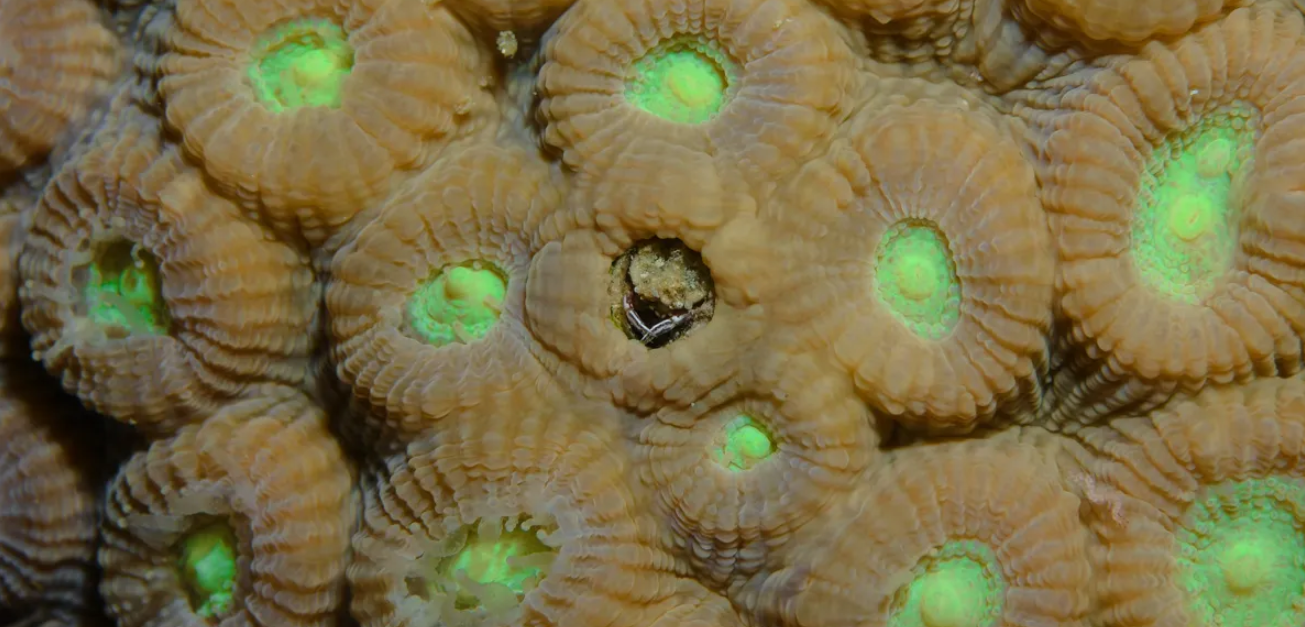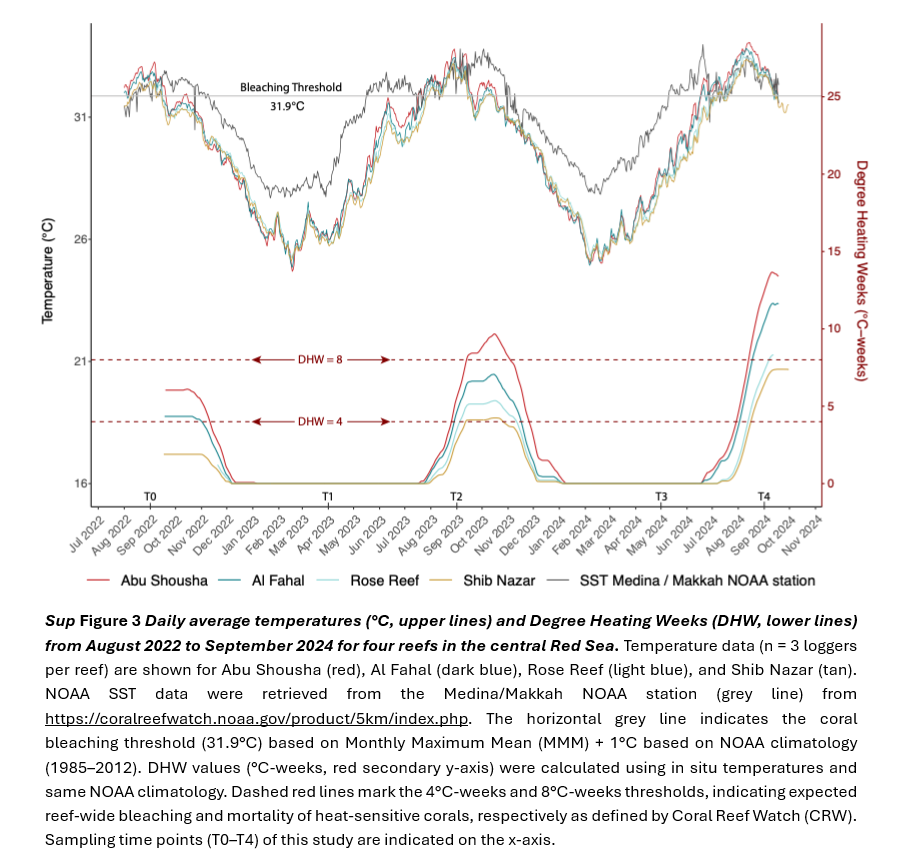News

Tiny crab tenants reveal the coral reef’s hidden strength
In a two-year study, scientists from King Abdullah University of Science and Technology (KAUST), University of Groningen, and the Naturalis Biodiversity Center have uncovered surprising secrets about one of the reef’s smallest residents — coral-dwelling gall crabs (Cryptochiridae). Despite being only a few millimetres long, these crabs play a crucial but often overlooked role in the health and resilience of coral ecosystems.
Tracking life on the reefs in the Red Sea
The research team tracked 799 individual crabs living on 517 coral colonies across four reefs in the central Red Sea. Using scuba-based surveys and an innovative “fate-tracking” approach, the scientists monitored each crab and its coral host over time, revealing that these symbionts are far more dynamic than previously believed. Colonization and extinction events were common, and larvae showed a distinct preference for settling on corals that already hosted other crabs. This suggests complex social or reproductive strategies.
Heat stress caught in with temperature and conductivity loggers
In 2023, a severe coral bleaching event struck the region. To understand the environmental trigger, the team deployed Star-Oddi DST CT conductivity and temperature loggers, which recorded water temperature every ten minutes. The sensors measured in situ and using the maximum monthly mean (MMM) temperature of 30.9°C and a bleaching threshold of 31.9°C a Degree Heating Week (DHW) values were calculated. DHW quantifies cumulative thermal stress over a 12-week period, calculated as the sum of positive temperature anomalies >= 1°C above the MMM. They showed thermal stress (DHW) exceeding 4°C-weeks , confirming that all sites experienced bleaching conditions, with some reaching up to 8°C-weeks. The loggers provided a crucial link between rising ocean temperatures and the coral community’s collapse offering data on how heatwaves develop in the ocean.

Bleaching survivors
The results showed that gall crab populations plummeted on nearshore reefs where coral death was extensive, while offshore reefs, with healthier corals, maintained stable and even reproductively active populations. At one nearshore site, a combination of bleaching and crown-of-thorns starfish predation caused a complete local collapse. Yet elsewhere, the species showed remarkable resilience and able to persist on bleached but living corals, quickly recolonize available hosts once conditions improved.
Tiny crabs with big ecological impact
The study also revealed that gall crabs quietly contribute to the reef’s energy flow. By feeding on coral mucus, they recycle nutrients and may help transfer energy to higher levels of the food web, much like tiny reef fish. Their high reproductive output and persistence on stressed corals make them important, if understated, players in reef recovery.
The study was recently published in Ecology and Evolution and can be found here